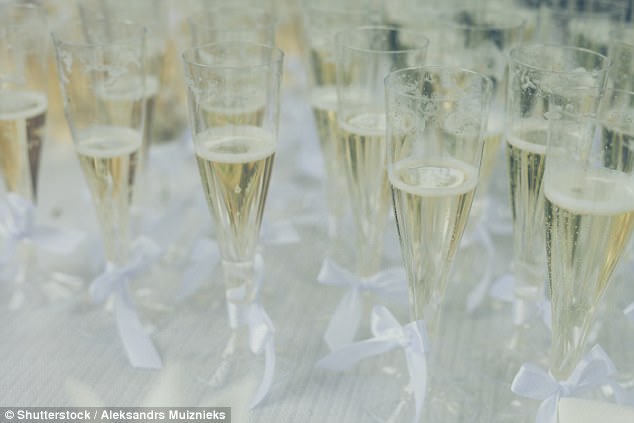It is something anyone who has enjoyed a cheeky celebratory drink in the office at this time of year will already suspect.
According to scientists, drinking champagne out of a disposable cup really does make it taste different.
Researchers found that sparkling wine served in plastic or polystyrene cups behaves very differently than it does in a glass.
They say the bubbles that form in disposable cups stick to the sides for longer and grow larger.
Bubble size is an important measure in the quality of sparkling wines like champagne, with finer bubbles often associated with premium vintages.
It means as the office Christmas party season gets underway, it may be worth thinking carefully about what you choose to serve your celebratory drinks in.
Dr Kyle Spratt, a researcher at the University of Texas at Austin who has been studying bubble formation in sparkling wines, said: ‘Just by looking, it was clear that the bubbles that formed in the styrofoam cup stuck to the sides much longer than they do in a flute, so that the bubbles are much larger than usual when they finally break off and rise to the surface.’
Dr Spratt and his colleagues made the observation while studying the sound bubbles make when the burst on the surface of a sparkling wine.
They have been attempting to identify distinct acoustic ‘fingerprints’ that can be used to help determine the quality of a champagne.
They presented some of their early findings at a conference organised by the Acoustical Society of America in New Orleans, Louisiana.
Dr Spratt said: ‘By listening to the bubbles we are able to infer information about the average size of the bubbles, the range of bubble sizes, and the overall bubble activity.
‘Bubbles are very resonant. They basically ring like bells, and the frequency of that ringing depends in part on the size of the bubbles.
‘There is a well-known notion that the quality of a sparkling wine is correlated to the size of its bubbles, and we are investigating whether the bubble size distribution of a sparkling wine can be obtained from simple acoustical measurements.’
While collecting data for the study using a hydrophone, however, Dr Spratt and his colleagues tried using polystyrene vessels to hold the sparkling wine in an attempt to avoid the slight ringing noise that glass flutes can create.
But they found the sparkling wine behaved completely differently when not in a traditional glass.
Their findings build on similar studies by researchers at the University of Reims in the heart of France’s Champagne-Ardenne region.
Professor Gérard Liger‑Belair, a chemical physicist who has spent years studying bubble dynamics in champagne, has shown that drinking from a flute can enhance the flavour of the wine far more than a wider coupe glass, due to the way the bubbles are released on the surface.
Etched glasses that aid the release of a steady stream of bubbles also help to enhance the taste, he has found.
But last year Professor Liger-Belair also discovered that smaller bubbles in champagne may not always mean it tastes better.
He found that larger bubbles actually release far more distinctive smell and flavour molecules into are flung into the drinker’s nose when they take a sip than smaller ones.
It suggests that rather than the size of the bubbles, drinkers should focus on the number that burst at the surface of their champagne as they take a glug.












